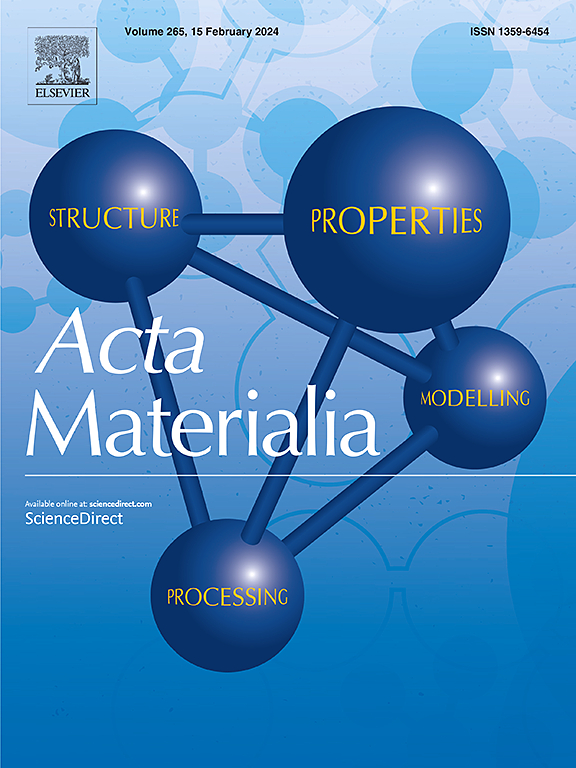基于缺陷工程的铋层陶瓷中压电响应和居里温度的协同提升
IF 8.3
1区 材料科学
Q1 MATERIALS SCIENCE, MULTIDISCIPLINARY
引用次数: 0
摘要
铌酸铋钙(CBN)在超高温压电材料中具有最高的居里温度(TC),在铋层结构铁电体(blsf)中具有广阔的应用前景。尽管压电系数(d33)和TC之间存在传统的权衡关系,但本研究展示了一种新的CBN陶瓷二维缺陷工程优化策略,该策略同时实现了优越的d33 (>;20 pC/N),并保持超高TC (>;960°C),以及高电阻率(>;107 Ω·cm(600°C)。通过多尺度微观结构分析,优化的面内绝缘性能和a位缺陷取向分布促进了自发极化的增加和高密度多畴态的形成,从而获得了优异的电性能。此外,偶极子和伴随的局域电场引起的晶格畸变增强提高了铁电相的稳定性,显著提高了TC。这项工作提出了一种新的协同优化方法,可以在未来的努力中实现Aurivillius化合物的卓越整体性能。本文章由计算机程序翻译,如有差异,请以英文原文为准。

Synergy Ascension of Piezoresponse and Curie Temperature in Bismuth-layered Ceramics via Defect Engineering
Calcium bismuth niobate (CBN) has emerged as a promising candidate for ultrahigh-temperature piezoelectric applications, exhibiting the highest Curie temperature (TC) among bismuth layer-structured ferroelectrics (BLSFs). Despite the conventional trade-off between piezoelectric coefficients (d33) and TC, this study demonstrates a novel 2D defect engineering optimization strategy for CBN ceramics that concurrently achieves a superior d33 (> 20 pC/N) and maintains ultra-high TC (> 960°C), as well as high electrical resistivity (> 107 Ω·cm at 600°C). Through multi-scale microstructural analysis, optimized in-plane insulating properties and A-site defect orientation distribution promote an increase in spontaneous polarization and the formation of high-density multi-domain states, resulting in excellent electrical performance. Moreover, enhancement of lattice distortions induced by dipoles and the accompanying local electric field improve the stability of the ferroelectric phase and significantly elevate the TC. This work presents a novel collaborative optimization approach for achieving exceptional overall performance within the Aurivillius compounds in future endeavors.
求助全文
通过发布文献求助,成功后即可免费获取论文全文。
去求助
来源期刊

Acta Materialia
工程技术-材料科学:综合
CiteScore
16.10
自引率
8.50%
发文量
801
审稿时长
53 days
期刊介绍:
Acta Materialia serves as a platform for publishing full-length, original papers and commissioned overviews that contribute to a profound understanding of the correlation between the processing, structure, and properties of inorganic materials. The journal seeks papers with high impact potential or those that significantly propel the field forward. The scope includes the atomic and molecular arrangements, chemical and electronic structures, and microstructure of materials, focusing on their mechanical or functional behavior across all length scales, including nanostructures.
 求助内容:
求助内容: 应助结果提醒方式:
应助结果提醒方式:


